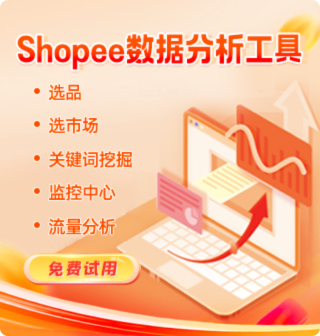-
用户196****2674
Shopee Product Selection: A Comprehensive Guide to Choosing Winning Products
Entering the Shopee marketplace as a seller offers tremendous opportunities due to its massive user base and regional reach. However, success on Shopee heavily depends on selecting the right products to sell. Product selection is not just about picking items you like; it requires a strategic approach encompassing market research, competition analysis, trend spotting, and understanding consumer behavior.
This article provides an in-depth exploration of Shopee product selection, including practical tips and actionable insights to help sellers identify profitable and sustainable products.
1. Why Product Selection Matters on Shopee
Shopee is highly competitive, with millions of products across diverse categories. Choosing the right products affects:
Sales volume and profit margins
Customer retention and reviews
Inventory turnover rate
Marketing effectiveness and campaign participation
A poor product choice can lead to slow sales, high storage costs, and wasted marketing budgets, while the right product can generate steady revenue and build brand credibility.
2. Key Factors to Consider When Selecting Products on Shopee
a) Market Demand and Trends
Successful sellers monitor product demand closely. Tools like Shopee’s search suggestions, “Top Selling” lists, and external trend analysis platforms (Google Trends, social media hashtags) help identify what products shoppers want. Seasonal trends and festival-related items (e.g., electronics during year-end sales, gifts during holidays) should also be considered.
b) Competition Analysis
Evaluate how saturated a product category is. Highly competitive products require differentiation through price, quality, or unique features. Analyze competitors’ pricing, reviews, and seller ratings to find gaps you can exploit.
c) Profit Margins and Pricing
Calculate all costs involved including product cost, shipping, Shopee commissions, packaging, and promotions. Choose products that allow reasonable profit margins while remaining competitive on price.
d) Product Size and Weight
Shopee’s logistics fees often depend on product dimensions and weight. Lightweight and compact products typically incur lower shipping fees, enabling better pricing flexibility.
e) Product Regulations and Restrictions
Check Shopee’s prohibited and restricted product list carefully. Some categories require certifications or licenses (e.g., health supplements, electronics). Avoid products that risk removal or account suspension.
f) Supplier Reliability and Lead Time
Ensure your suppliers can consistently provide quality products on time. Delays or poor quality impact seller ratings and customer satisfaction.
3. Methods to Identify Winning Products on Shopee
a) Use Shopee Analytics and Seller Center Insights
Shopee’s Seller Center provides data on top-performing categories and products. Analyze these reports regularly to spot high-demand items and emerging trends.
b) Explore Shopee Campaigns and Themed Events
Shopee runs frequent campaigns (Flash Sales, 9.9, 11.11, etc.) focusing on specific product groups. Aligning your inventory with these themes can boost visibility and sales.
c) Leverage Customer Reviews and Q&A
Reading product reviews on Shopee can reveal buyer pain points and preferences. This insight helps you select or improve products to better meet customer needs.
d) Experiment with Niche Products
Sometimes less saturated niches offer better opportunities. For example, eco-friendly personal care items or specialized hobby tools can attract loyal customers with less competition.
4. Practical Tips for Product Selection Success
Start with a Small Product Range: Limit initial offerings to a few well-chosen products to focus marketing and inventory management efficiently.
Test and Iterate: Use small batches to test market response before scaling up inventory.
Bundle Products: Create bundles or kits for better perceived value and differentiation.
Focus on Product Quality and Presentation: High-quality images, detailed descriptions, and transparency about product features reduce returns and improve ratings.
Consider After-Sales Support: Products that require customer support (electronics, gadgets) should be manageable within your service capacity.
5. Common Mistakes to Avoid in Product Selection
Ignoring Shipping Costs: Overlooking logistics fees can erode profits significantly.
Following Fads Blindly: Some trending products might have a short lifecycle; balance trends with evergreen items.
Neglecting Market Research: Assuming “good products” without data backing can lead to poor sales.
Overstocking: Holding too much inventory of untested products leads to cash flow problems.
6. Advanced Strategies for Shopee Product Selection
Data-Driven Selection: Use external tools (Jungle Scout alternatives, Marketplace Pulse, or Shopee-specific software) for competitive intelligence.
Cross-Border Opportunities: Identify products with demand in other Shopee markets where competition is lower.
Private Labeling: Once a product niche is validated, consider creating a private label brand to build customer loyalty and improve margins.
Seasonality Planning: Map out product demand fluctuations across the year and plan inventory accordingly to avoid stockouts or excess.
Conclusion
Choosing the right products on Shopee requires a combination of thorough market research, competitive analysis, and strategic planning. Sellers who make data-informed decisions and continuously monitor their product performance tend to outperform those who rely on intuition alone.
By following the guidelines and tips outlined in this article, sellers can improve their product selection process, minimize risks, and build a solid foundation for long-term success on Shopee’s dynamic platform.

